Ever wondered, “How do automatic tire chains work?” Well, you’re not alone. As winter roads become slippery, this ingenious technology has piqued the interest of many. Dive into this guide, and we’ll unravel the mechanics behind it. Ready to decode the magic? Let’s get started.
In challenging terrains, particularly snowy or icy surfaces, tire chains prove indispensable for safe navigation. Traditionally, equipping vehicles with chains was a manual, cumbersome task, often done in frigid temperatures.
However, the evolution of automatic tire chains has revolutionized this space. Designed predominantly for trucks, these automatic chains for trucks offer the traction needed without manual intervention.
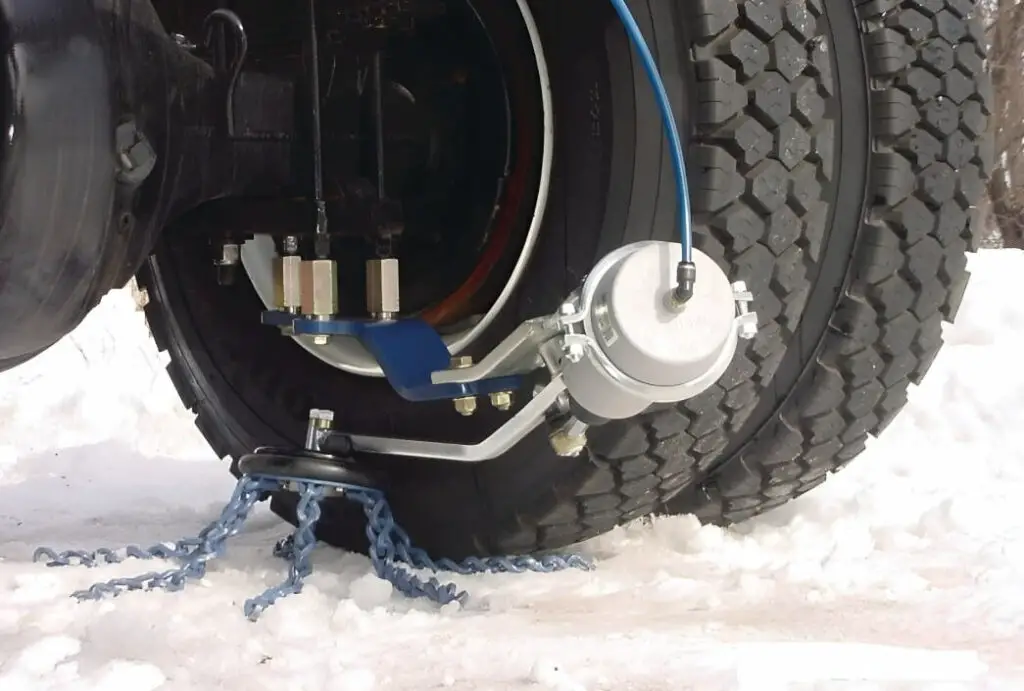
Automatic tire chains operate via a switch mechanism inside the vehicle. When activated, a chain wheel rotates, releasing chain strands beneath the tires. This provides immediate traction on snowy or icy surfaces without the driver needing to exit the vehicle.
As these chains gain popularity, many potential users often ask how do automatic tire chains work before investing in them for winter safety. So, if you’re exploring the best automatic tire chains or seeking to understand the benefits of automatic tire chains, continue reading. They stand out as a prime example of innovation enhancing winter driving safety.
What are Automatic Tire Chains?
As the world of vehicular technology continues to evolve, one can’t help but marvel at innovations designed to make our driving experience safer and more efficient. In the realm of winter driving, automatic tire chains emerge as a groundbreaking solution to a common challenge. But what are automatic tire chains, and how do they transform our driving experience in icy and snowy conditions?
Automatic tire chains are an advanced traction system designed for vehicles, especially trucks, to provide them with instant traction on slippery roads. These chains can be activated with a simple switch, allowing them to swing out beneath the tires, eliminating the need for the driver to manually install them. They’ve become particularly popular as automatic tire chains for semi trucks, given the difficulty of manually fitting chains on such large vehicles.
Automatic tire chains are advanced traction systems that, at the flick of a switch, swing out and provide immediate traction for vehicles on icy or slippery roads. Eliminating the need for manual installation, they offer an efficient and safer alternative, especially for larger vehicles like semi-trucks.
Comparatively, traditional tire chains require manual effort; drivers need to stop, get out of their vehicles, and physically attach the chains to their tires. This not only exposes them to harsh weather conditions but also consumes a considerable amount of time.
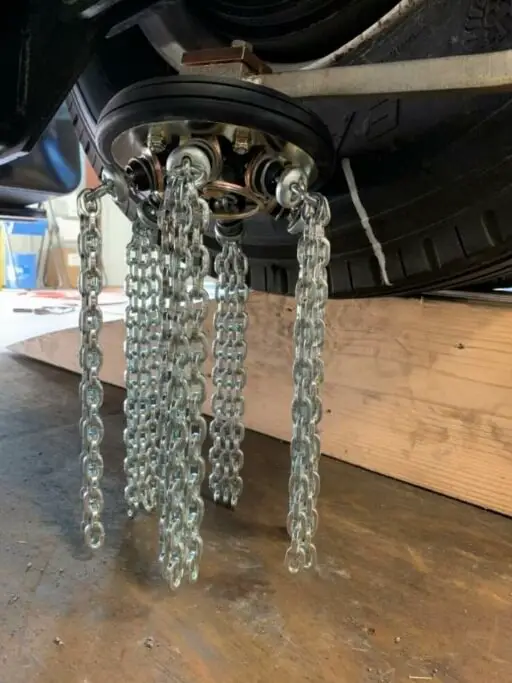
On the other hand, understanding how do automatic tire chains work reveals their efficiency. They can be engaged or disengaged in mere seconds. Given the different types of automatic tire chains available in the market, drivers have the flexibility to choose the system best suited for their vehicle’s requirements.
So, how do automatic tire chains differ from traditional tire chains?
Beyond the evident convenience, they offer drivers the freedom to decide when should you use automatic tire chains, switching them on or off as needed. For those pondering how do automatic drop down chains work, it’s a similar principle, emphasizing ease of use and rapid deployment.
When it comes to how to choose the right automatic tire chains for your vehicle, it’s crucial to consider the vehicle type, driving conditions, and personal preferences. This ensures that whether you’re seeking automatic tire chains for trucks or any other vehicle, you’re equipped with the best traction solution available.
Must check: Why Do Buses Have Chains Underneath? The Purpose Revealed
The Mechanics of Automatic Tire Chains
Delving into the specifics of how do automatic chains work allows one to truly appreciate the ingenuity behind this traction solution. The automatic tire chain system is an intricate combination of components, each with its specific function, working in harmony to ensure the chains deploy rapidly and retract seamlessly.
To understand how do automatic tire chains work in various terrains, especially during snow and ice conditions, we need to take a closer look at the essential parts making up the system.
System Components
One of the key strengths behind the impressive automatic tire chain performance in various snow and ice conditions is its well-engineered components. Let’s delve into the essential automatic tire chain components:
- Chain wheel: At the heart of the system, the chain wheel holds and rotates the chains. When activated, this wheel swiftly swings out beneath the tires, ensuring that the chains come into direct contact with the road surface, providing instant traction.
- Rotating mechanism: This is the magic behind the rapid deployment and retraction of the chains. Connected to the chain wheel, the rotating mechanism is responsible for the swift and fluid motion, ensuring chains are always in the optimal position for maximum traction.
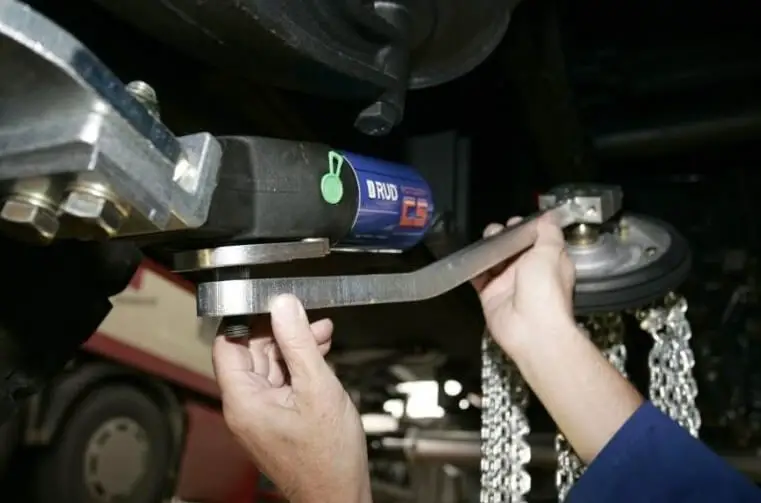
- Control switch/button: An automatic tire chain deployment system wouldn’t be complete without a control interface. This switch or button, usually located within the driver’s reach, allows for the easy engagement and disengagement of the chains. With a simple push, drivers can activate or retract the system, making the entire automatic tire chain operation hassle-free.
Understanding these parts of an automatic tire chain system is fundamental to grasping the efficiency and effectiveness of this modern traction solution.
How the Automatic Tire Chain System Works
Grasping the mechanics of the automatic tire chain system boils down to understanding a sequence of precise actions. These actions, when executed in perfect harmony, ensure that your vehicle receives optimum traction in challenging conditions.
Activation of the Chain Wheel
The process starts with the activation of the chain wheel. When a driver senses the need for enhanced traction, especially on icy or slippery roads, they can easily engage the system.
Using the control switch/button, the driver commands the chain wheel to swing into action. For those wondering how do automatic tire chains engage, it’s this initial step that sets the entire system in motion.
Slinging of Chains Under the Tire
As the chain wheel activates, it begins slinging of chains under the tire. Due to the centrifugal force, these chains move outward, positioning themselves perfectly beneath the tires. This process ensures that the chains have maximum contact with the road, providing an immediate boost in traction.
Continuous Rotation and Chain Strand Throwing
The beauty of the system lies in its continuous rotation and chain strand throwing. As the vehicle moves, the chain wheel continues its rotation, making sure the chains are consistently thrown under the tire, ensuring sustained and reliable traction.
Lastly, how do automatic tire chains disengage? It’s as straightforward as engaging them. With a simple press on the control switch/button, the system swiftly retracts, making the whole process of how to engage and disengage automatic tire chains a breeze for any driver.
Operation of the Onspot System
The Onspot system is among the renowned names in the world of automatic tire chains, providing a seamless and efficient solution for drivers seeking enhanced traction. But exactly how do Onspot tire chains work?
Engaging and Disengaging the Chains
Just like other automatic chains, Onspot tire chains allow for effortless engagement and disengagement. A driver can easily turn on the system when faced with slippery or icy roads. The chains swing out and start providing traction immediately.
Conversely, when conditions improve or if the vehicle moves to a non-icy surface, a simple press on the control switch/button quickly retracts the chains. This ease of how to engage and disengage automatic tire chains stands out as one of the system’s primary advantages.
Safety Precautions
Beyond the basic automatic tire chain operation, Onspot ensures drivers have added layers of security. The automatic tire chain safety features in the Onspot system prevent potential damage or mishaps.
Additionally, drivers should always remember some automatic tire chain safety tips: ensure regular maintenance checks, avoid excessive speeds even with the chains engaged, and always disengage the system when not needed to prolong its lifespan.
In essence, the Onspot system provides both functionality and peace of mind for drivers navigating challenging terrains.
You might also like to see: 10 Best Tractor Tire Chains for Snow and Ice
Benefits of Using Automatic Tire Chains
Navigating roads covered in snow and ice can be daunting. Traditional tire chains, while effective, have their limitations. Enter the modern marvel: automatic tire chains. These chains are revolutionizing the way drivers handle challenging conditions, especially for those driving large vehicles like trucks.
So, what are the core benefits of automatic tire chains that make them a preferred choice? Let’s check them out:
Faster and More Convenient Method
One of the primary appeals of automatic chains for trucks and other vehicles is their speed and convenience. Forget the tedious process of manually fitting chains each time conditions worsen.
With automatic chains, at the simple flick of a switch, you have instant traction. Especially when considering automatic tire chains for snow and ice, this immediate response can be a lifesaver.
Safety Advantages
The safety advantages of automatic tire chains cannot be overstated. They offer improved traction in snow and ice, leading to a reduced risk of skidding and accidents. Traditional chains might offer traction but can’t compete with the rapid deployment and adaptability of automatic chains.
Cost-Effectiveness Over Time
Initially, automatic chains might seem like a costly investment. However, when analyzing the cost-effectiveness of automatic tire chains over the long run, they can lead to significant savings. Reduced wear and tear, fewer replacement costs, and the potential to avoid costly accidents make them a financially wise choice.
Reduced Physical Labor and Time-Saving
Time is precious, especially in harsh weather conditions. Automatic tire chains for snow and ice are easier to install and remove than traditional tire chains. Drivers can stay inside their warm vehicles, free from the hassle and physical exertion of manual installation.
Increased Peace of Mind
Lastly, the psychological benefit shouldn’t be overlooked. Knowing that you have a system ready to tackle challenging terrains gives drivers an increased peace of mind when driving in winter conditions. Whether it’s a sudden snowstorm or unexpected ice patches, automatic tire chains ensure that you’re always prepared.
In essence, for a safer, more efficient, and hassle-free driving experience during winter, automatic tire chains prove to be an invaluable asset.
You might also like: The Best Tire Chains for Different Types of Snow: Expert Reviews
Considerations Before Investing in Automatic Tire Chains
Though automatic tire chains provide immense value, they may not be for everyone. Like any product, while there are substantial advantages, there are also factors you should consider before making a purchase.
This decision is especially vital given the importance of safety on icy or snow-covered roads. Below, we delve into some of the key considerations to weigh before investing in this technology.
Cost Implications
One of the most frequent questions potential buyers ask is, “How much do automatic tire chains cost?” The automatic snow chains cost can be significantly higher than manual chains, especially when looking at brands like Onspot.
The Onspot automatic tire chains cost, while higher than traditional options, can be justified by their convenience and efficiency. However, before searching for automatic tire chains for sale, it’s important to evaluate if the cost of automatic tire chains aligns with your budget and expected use.
Maintenance and Repair
No equipment is immune to wear and tear, and the same applies to automatic chains. A common query revolves around automatic tire chains problems. Regular maintenance can alleviate most issues, but over time, parts might need replacing.
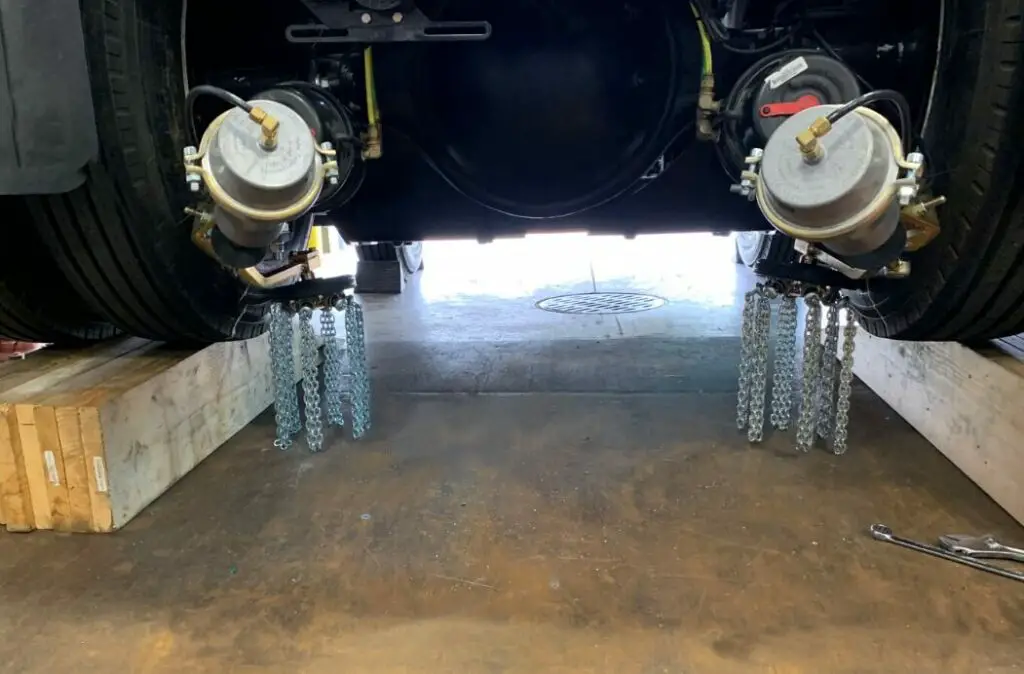
It’s crucial to factor in the potential costs of upkeep and the availability of parts or repair services. The durability and longevity of automatic tire chains will often depend on how well they’re maintained.
Suitability for Specific Vehicles and Terrains
Not all automatic chains are a one-size-fits-all solution. The weight and size of automatic tire chains can vary, and it’s essential to ensure compatibility with your vehicle.
Additionally, while they’re designed for icy and snowy conditions, certain terrains or extreme conditions might pose challenges. Research and consultations are key to ensuring you choose chains suited to your specific needs.
Ease of Installation and Longevity
Finally, consider the ease of installation and removal. Some models might be more user-friendly than others. It’s worth investing time in understanding the installation process, especially if you’re considering switching between vehicles.
Moreover, as touched on earlier, the durability and longevity of automatic tire chains come into play. Ensuring you choose a high-quality product will not only enhance safety but also provide better value over time.
In conclusion, while automatic tire chains offer numerous benefits, understanding these considerations will ensure you make an informed and satisfactory purchase.
Must check: Are Snow Chains Better Than Snow Tires for Winter Traction?
Automatic Tire Chains vs Traditional Tire Chains: A Comparative Analysis
Now that we’ve delved deep into both realms, let’s pit automatic tire chains against their traditional counterparts in a head-to-head comparison. Both types serve the same fundamental purpose: providing vehicles with enhanced traction on icy and snowy roads. However, they diverge considerably in operation, cost, and usability.
Many who have used tire chains for pickup trucks, commercial vehicles, and even school buses often find themselves wondering about the differences, advantages, and potential drawbacks between the two. Let’s check out what are the differences between automatic and traditional tire chains:
| Aspect | Automatic Tire Chains | Traditional Tire Chains |
|---|---|---|
| Operation | Activated by a switch, automatic chains for tires deploy swiftly, covering the tire in seconds. | Manually installed each time conditions demand. |
| Convenience | Drop down chains make the engagement process smoother. Wondering how do drop down chains work? They simply drop and wrap around the tire. | Requires stopping, laying chains, and then proceeding. |
| Cost | Automatic tire chains cost more initially, though may offer value over time with reduced wear and manual effort. | Generally less expensive initially, but may have more frequent replacement costs. |
| Type of Vehicles Best Suited | Often dubbed the best automatic tire chains for commercial vehicles, including school buses and semi-trucks. | Commonly used for a range of vehicles, including smaller ones. |
| Durability | Automatic snow tire chains are built for frequent use and can handle the rigors of daily deployment. | Traditional chains may wear out faster with repetitive manual installations. |
| Safety | Typically safer due to on-the-fly engagement, reducing the need to step out in cold, slippery conditions. | Riskier as installation requires being outside, potentially in hazardous conditions. |
| Maintenance and Upkeep | May require occasional maintenance, especially for components like the drop down tire chains mechanism. | Might need more frequent checks for wear, tear, and potential rusting. |
In essence, the decision between automatic tire chains vs traditional tire chains hinges on individual needs, frequency of use, and budget considerations. For those operating commercial vehicles, especially school buses or semi-trucks, understanding how do automatic tire chains work on a school bus or a semi-truck can aid in making an informed decision.
Must check: 13 Best Snow Tires for Trucks to Ensure Your Safety in Snowy Conditions
When Should You Use Automatic Tire Chains?
Navigating winter roads can be treacherous. For enhanced safety, knowing when to use automatic tire chains is crucial. Automatic tire chains for winter driving are predominantly designed to offer traction during snowy or icy conditions.
They’re especially handy when you encounter frequent changes in road conditions. Moreover, if you’re climbing steep hills or grades, these tire chains become indispensable for maintaining grip.
The optimal time to use automatic tire chains is during snowy or icy conditions, particularly when driving on variable terrains or steep inclines. They provide immediate traction, adapting swiftly to changing road scenarios, ensuring peace of mind during winter drives. However, their efficacy may vary based on snow type, and they’re not meant for deep snow or mud.
But it’s not just about the optimal conditions for tire chains. There might be times when space constraints prevent the fitting of traditional chains, making automatic chains a preferred alternative. But remember, while they offer automatic tire chains for peace of mind, they’re not a substitute for regular tire maintenance.

In terms of seasonal use of automatic tire chains, their deployment mainly aligns with winter. It’s essential to be aware of the legal requirements for using automatic tire chains in certain regions.
Lastly, discern when to install tire chains and more importantly, when to remove automatic tire chains to ensure they’re utilized effectively and in accordance with local guidelines.
Must check: Can You Put Snow Chains on Snow Tires for Maximum Safety?
How Fast Can You Drive with Automatic Tire Chains?
When it comes to how fast can you drive with automatic tire chains, there are key considerations to keep in mind. Initially, manufacturers emphasize driving safely, with the recommended speed for driving with automatic tire chains being between 20 to 30 mph (30 to 50 km/h). Within this context, best practices underscore that a driver’s focus should be on safety rather than speed.
The legal speed limits for driving with automatic tire chains vary. Generally, the recommended speed is between 20 to 30 mph (30 to 50 km/h). However, some local regulations, like in Cumru Township, specify that the maximum speed with tire chains should not exceed 35 mph. Always adhere to manufacturer guidelines and local laws when using tire chains.
Moreover, understanding the maximum speed with tire chains is crucial. For instance, the policy from Cumru Township highlights a limit of 35 mph. When pondering how fast can you go with chains on your tires, it’s vital to keep these numbers in mind.
Additionally, driving speed with automatic snow chains and best practices for driving with automatic tire chains must be integrated seamlessly. To encapsulate, driving safely with automatic tire chains ensures you’re not only adhering to guidelines but also protecting yourself and your vehicle.
Thus, when asking yourself, how fast can you drive with chains on your tires, always prioritize safety and abide by the recommended guidelines.
Must check: The Best Alternatives to Snow Chains for Tires: An In-Depth Guide
How Long Do Automatic Tire Chains Last?
Automatic tire chains have grown in popularity due to their convenience and immediate traction on icy or snowy roads. The lifespan of automatic tire chains largely depends on their frequency of use and the conditions they endure. On average, according to the renowned manufacturer Onspot, these chains last for about 2,000 engaged miles.
However, the life expectancy of automatic tire chains can extend further with proper maintenance. For instance, metal tire chains, known for their durability, can serve you up to a decade before needing a professional’s inspection. On the other hand, cable chains boast a life expectancy nearing 40,000 miles.
So, how long do automatic tire chains last? Here’s the answer:
Onspot, a leading manufacturer of automatic tire chains, suggests they typically last for 2,000 engaged miles. Nevertheless, with good maintenance of automatic tire chains, metal versions can last up to 10 years, while cable chains can reach around 40,000 miles. End of Featured Snippet.
Ensuring the longevity of automatic tire chains involves consistent checks and upkeep. Factors such as the type of surface, frequency of use, and storage conditions can influence the durability of automatic tire chains. To extend the life of automatic tire chains, make sure they are installed correctly, regularly inspected, and stored in cool, dry places. It’s also beneficial to engage them only on appropriate surfaces and to lighten the vehicle’s load when possible.
Considering the top choices, the best tire chain brands like Peerless Auto-Trac, KÖNIG, and Security Chain Company stand out in the market for SUVs and trucks in heavy snow. Before making a purchase, it’s crucial to research the best brands of automatic tire chains and to understand how to maintain them for maximum lifespan.
Must check: Do You Need Snow Chains on All 4 Tires for Your Vehicle?
How Much Do Automatic Tire Chains Cost?
The automatic tire chains price can vary significantly based on several factors, including brand, vehicle type, and specific requirements for installation. For those with vehicles boasting air brakes, Onspot, a recognized brand in this domain, offers their chains at around $2,000 per drive axle.
This price, however, does not include additional costs such as installation and freight. Interestingly, the price range of automatic tire chains for Onspot also spans from $168 to $289.99, depending on the product specifics.
Automatic snow chains, depending on the brand and vehicle compatibility, can cost anywhere from under $100 to over $2,500. Onspot, for instance, prices their chains from $168 to $2,000 per drive axle, excluding installation and freight. Consumers should compare different brands for the most cost-effective options.
In your quest for affordable automatic tire chains, cost comparison is paramount. For example, Amazon offers anti-skid variants under $100, catering to the budget-conscious. On the other end, West Tech Mobile presents brands like SnoClaws and Insta-Chain, priced at approximately $1,800 and $2,500 respectively per set.
Given the varied pricing of automatic snow chains, it’s crucial to determine the budget for automatic tire chains that suits both your pocket and vehicle’s needs. Always remember, the cost might also hinge on weather conditions the chains are tailored for.
When assessing how much do automatic snow chains cost, also consider the specific vehicle and the potential installation requirements. Such thorough research ensures the best blend of affordability and functionality.
Must check: Do AWD Cars Need Chains on All Tires? An Expert’s Perspective
Can Automatic Tire Chains Be Used on All Types of Vehicles?
Automatic tire chains, while innovative, aren’t universally compatible. Best vehicles for automatic tire chains include pickups, tractor trailers, and some specialized vehicles.
For example, the Rotogrip system suits 3/4 ton pickups and larger vehicles, even encompassing ambulances. Automatic chains for semi trucks, such as those by ONSPOT, cater to vehicles ranging from 1/2 ton pickups to class 8 tractor trailers.
Moreover, when you ponder, “Do school buses have automatic tire chains?”, you’ll find that they indeed can. OnSpot designs specific automatic tire chains for buses, ensuring safety during harsh conditions.
The vehicles suitable for automatic tire chains largely encompass pickups, tractor trailers, and some emergency vehicles. While school buses can be equipped with these chains, not all vehicles, especially certain cars and SUVs, are compatible. It’s vital to check the manufacturer’s specifications to ascertain compatibility.
However, there are vehicles not compatible with automatic tire chains. Some cars and SUVs, due to their build and ground clearance, might not be ideal for such chains.
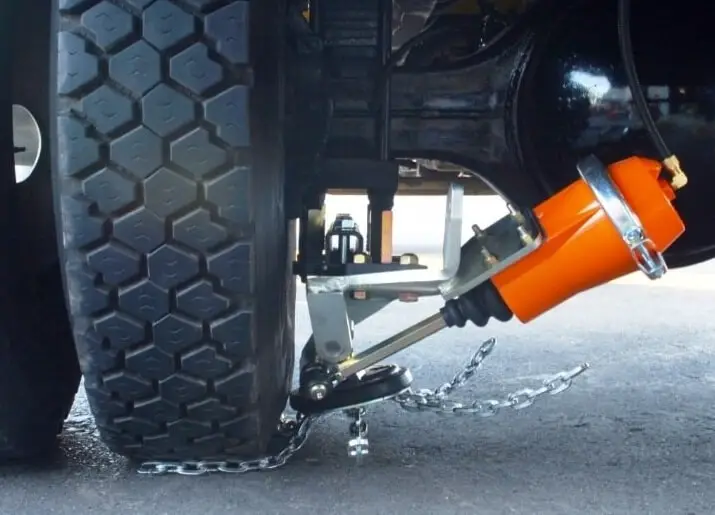
If you’re uncertain, you must learn how to check if your vehicle is compatible with automatic tire chains. This involves scrutinizing the owner’s manual, verifying tire size, or even consulting professionals. Ensuring a vehicle’s compatibility is paramount to guarantee safety and proper functioning of the chains.
Must check: How Fast Can You Drive with Snow Chains on Your Tires?
Getting to the Basics: FAQs on How Do Automatic Tire Chains Work
Navigating the world of tire traction can be a slippery slope, and while automatic tire chains present an innovative solution, there’s a flurry of questions that accompany their usage. To address some pressing concerns, here we’ve compiled a list of frequently asked questions to shed more light on these innovative devices. Let’s check them out:
-
Why should I have automatic tire chains?
Automatic tire chains offer enhanced safety, especially in unpredictable weather conditions. With the ability to engage or disengage them swiftly, drivers enjoy increased control. This is invaluable during sudden snow or ice storms. Moreover, they save time compared to manual installations and eliminate the need for stopping and handling cold, wet chains. Considering the benefits and drawbacks of automatic tire chains, many find the advantages far outweigh any potential negatives.
-
Can automatic tire chains be used on any type of vehicle?
Not all vehicles are compatible with automatic tire chains. While they’re often ideal for commercial vehicles, school buses, and larger trucks, it’s essential to check compatibility with your specific vehicle model. Proper how to install automatic tire chains guidelines must be followed to ensure safety and efficiency.
-
What are the different types of automatic tire chains?
There are several types of automatic tire chains, each designed to meet specific vehicle needs and driving conditions. Some prominent different types of automatic tire chains include drop-down chains, spinning disc systems, and Onspot automatic tire chains. Each type varies in how they deploy and their mechanism of providing traction.
-
Do on spot chains work in reverse?
Yes, on spot chains are designed to work both when moving forward and in reverse. This functionality ensures that vehicles have the necessary traction in situations that require backing up, ensuring drivers have the confidence and safety features they need, regardless of the direction. Wondering how do automatic snow chains work in various conditions, including reverse? The continuous rotation and adaptability of the system cater to diverse driving scenarios.
-
Are there any alternatives to automatic tire chains that offer similar benefits?
Certainly! Snow socks for cars are fabric-based alternatives that wrap around tires, offering enhanced traction on snow. Snow tires for cars have specialized treads designed for winter conditions, providing improved grip. And for those without these special tires, traditional snow chains for cars without snow tires remain a tried-and-true method.
-
Where can I buy automatic tire chains?
You can find automatic tire chains at various sources. Many online retailers of automatic tire chains offer a wide range of brands and models. Auto parts stores and local tire shops might also have them in stock or can provide recommendations based on your vehicle’s specifications.
-
How do automatic tire chains differ from regular tire chains?
The primary distinction is that automatic tire chains can be engaged and disengaged with the flip of a switch, eliminating the manual hassle. Though automatic tire chains are more expensive than regular tire chains, they offer convenience, being generally easier to use than regular tire chains.
-
Are automatic tire chains legal to use?
Mostly, automatic tire chains are legal to use in most jurisdictions. However, there might be exceptions, and it’s crucial to check the laws in your area before using automatic tire chains to avoid any legal complications.
-
Which automatic tire chains are the best?
Determining the best automatic tire chains boils down to personal needs and budget. You should weigh factors like your vehicle type, local climate, and anticipated frequency of use.
-
What are the disadvantages of using automatic tire chains?
There are a few drawbacks: automatic tire chains are more expensive than regular tire chains and tend to be heavier and bulkier. Moreover, they may not be as compatible with all types of vehicles as regular tire chains.
-
Are there any safety concerns associated with using automatic tire chains?
Using automatic tire chains can lead to a decrease in vehicle speed and fuel efficiency. They may also increase wear and tear on your tires. Another potential concern is that they can make it more difficult to stop and turn your vehicle, which is crucial to consider when gauging safety.
Concluding Thoughts on How Do Automatic Tire Chains Operate
Winter driving often presents unpredictable challenges. As the mercury drops and roads get slippery, the importance of automatic tire chains becomes abundantly clear. Unlike their manual counterparts, these chains offer immediate traction without requiring drivers to brave the cold. But how exactly does this innovation function?
Automatic tire chains operate through an onboard switch. When engaged, a mechanism releases chains beneath the tires, instantly improving traction. This system allows for real-time adaptation to changing road conditions, making winter driving safer and more efficient.
Embracing automatic tire chain technology is pivotal in modern driving. Beyond the obvious convenience, there’s a profound safety aspect. Automatic tire chains safety tips emphasize their correct use and maintenance, but understanding how do automatic tire chains work is essential for maximizing their benefits.
As you contemplate enhancing your vehicle’s winter preparedness, remember that considering automatic tire chains for vehicles goes beyond mere convenience; it’s a significant leap towards safer, more controlled journeys. Let this knowledge be the cornerstone of your decision-making for automatic tire chains. Drive safe and stay informed!
Don’t miss out on these related topics: